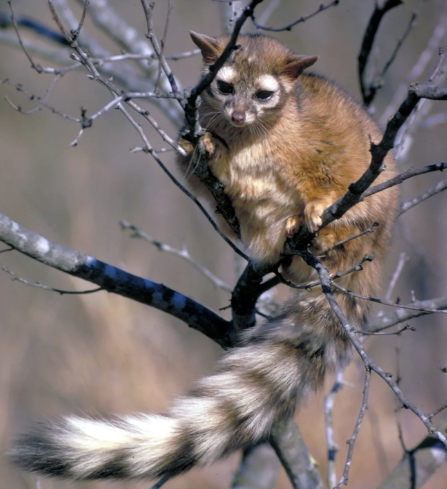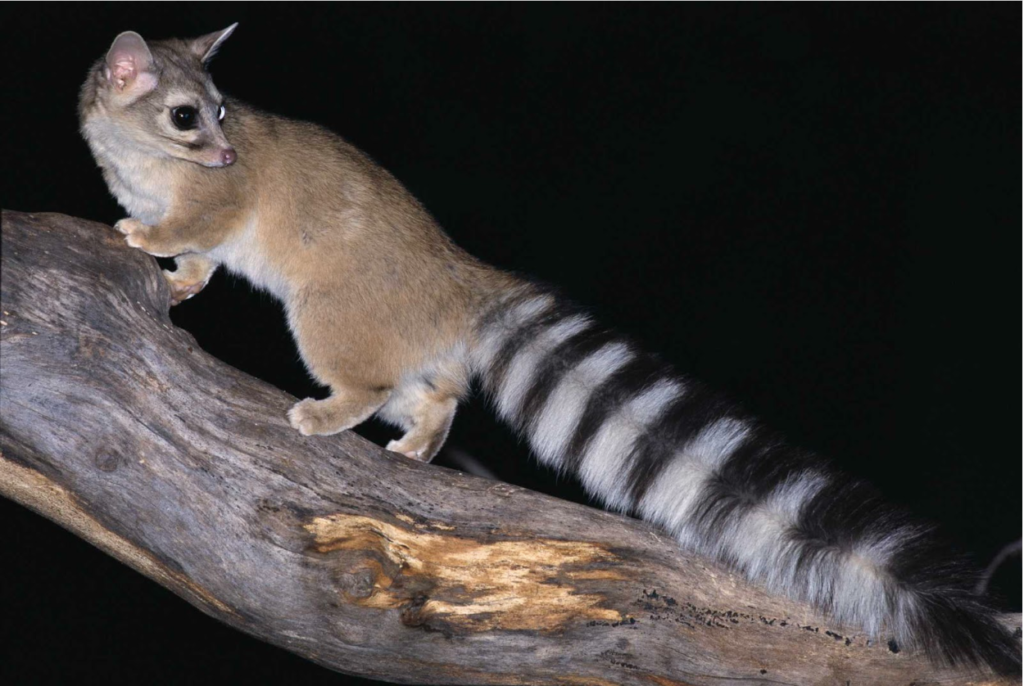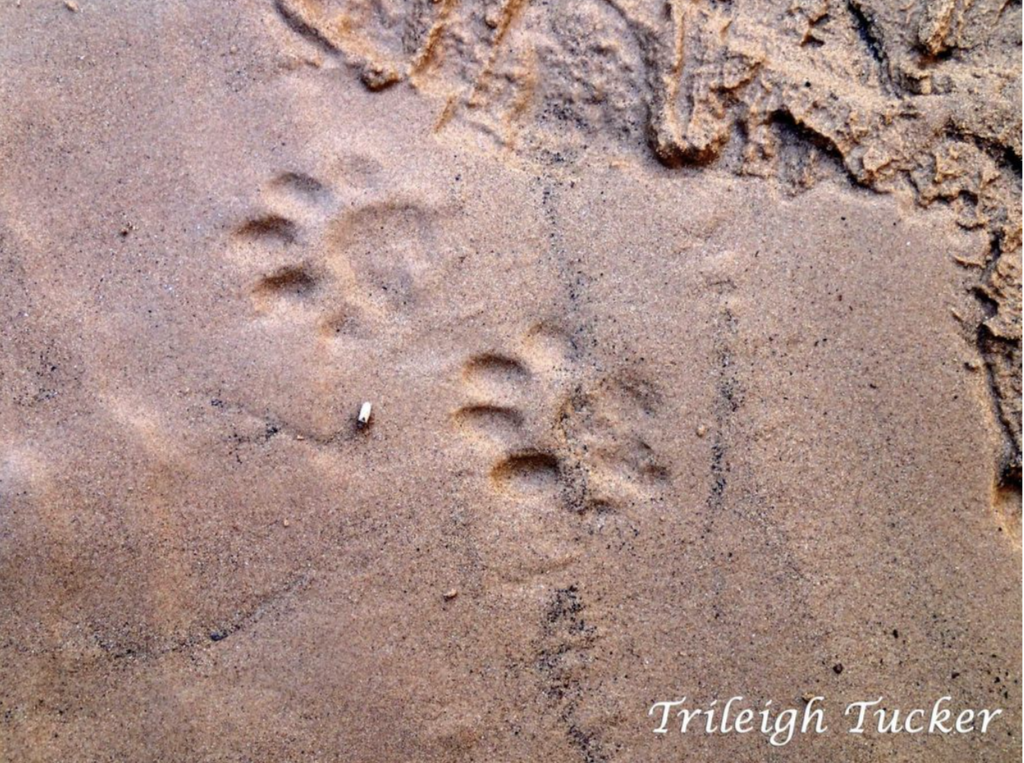Central Texas is home to all sorts of fascinating critters, but few are as mysterious and mischievous as the ringtail cat. And don’t let the name fool you—this little guy isn’t a cat at all! Part raccoon, part acrobat, and 100% adorable, the ringtail is a nocturnal ninja that’s more likely to spot you before you ever see it.
What’s a Ringtail Cat, Anyway?
First things first, let’s clear up the confusion. The ringtail cat (Bassariscus astutus) isn’t actually a cat. It’s more like a pint-sized raccoon with some serious style points. With its long, bushy tail that sports bold black-and-white stripes, this little mammal looks like it walked straight out of a cartoon. Add in those big, curious eyes and pointy ears, and you’ve got one of the most charming critters in Central Texas.
Fun Facts About the Ringtail
Scientific Name: Bassariscus astutus
Physical Description: Ringtails are small but mighty, usually weighing 2 to 3 pounds. Their bodies are about 12 to 17 inches long, and their tails add another 12 to 17 inches of fabulous fluff. Those big eyes? Perfect for seeing in the dark. And their tails? Not just for show—they use them for balance as they leap and bound through the trees like furry little gymnasts.
Behavior: These guys are night owls, living it up while the rest of us are fast asleep. They’re expert climbers, using their tails to keep steady as they navigate rocky terrain and tree branches. And when they do speak up, they’ve got quite the vocal range—from cute little clicks and chirps to shrieks that’ll make you jump if you hear them in the dark!
Habitat: Ringtails are right at home in Central Texas’ rocky landscapes, woodlands, and semi-arid areas. They love hiding out in crevices, caves, and hollow trees during the day, then heading out on the prowl when the sun goes down.
The Ultimate Night Owl
Ringtails are the definition of elusive. They’re nocturnal creatures, meaning they’re most active under the cover of darkness. If you’re lucky enough to spot one, it will likely be during dusk or dawn when they’re out hunting for food. Their diet is as varied as they are, ranging from small mammals and insects to fruits and berries. This adaptability earned them the nickname “miner’s cat,” as they were once kept by miners to control rodent populations in their camps.
Why These Little Ninjas Matter
Role as a Predator: Ringtails aren’t just cute—they’re also crucial for keeping the ecosystem in check. They love snacking on rodents, insects, and even the occasional berry. This varied diet means they’re great at pest control, making your land healthier and happier.
A Sign of a Healthy Environment: If you’ve got ringtails hanging around, that’s a pretty good sign your property is in tip-top shape. These guys need a diverse habitat to thrive, so spotting a ringtail (or its tracks) could mean your land is a wildlife wonderland.
How to Spot (or Hear) a Ringtail
Ringtails might be shy, but they do leave clues. Keep an eye out for their tiny tracks in soft soil, or listen for their unique calls at night. If you’re into wildlife photography, setting up a trail camera near water sources or rocky areas might just give you a glimpse of these furry night owls in action.
Invite a Ringtail to Your Backyard
Want to roll out the welcome mat for ringtails? Keep your property’s natural features intact. Rock piles, dense underbrush, and even that old barn in the back are perfect hangouts for these critters. Reducing pesticide use will also help keep their food sources plentiful. Just remember, while having them around is fun, it’s best to admire them from afar—they’re wild animals, after all!
Final Thoughts
The ringtail cat might be one of Central Texas’s best-kept secrets, but now you’re in on the fun! Whether you’re a landowner or just someone who loves nature, knowing that these sneaky little ninjas are sharing the land with you adds a bit of magic to those warm Texas nights. So next time you’re out under the stars, keep an eye out—you might just spot one of these nocturnal marvels making its rounds.











